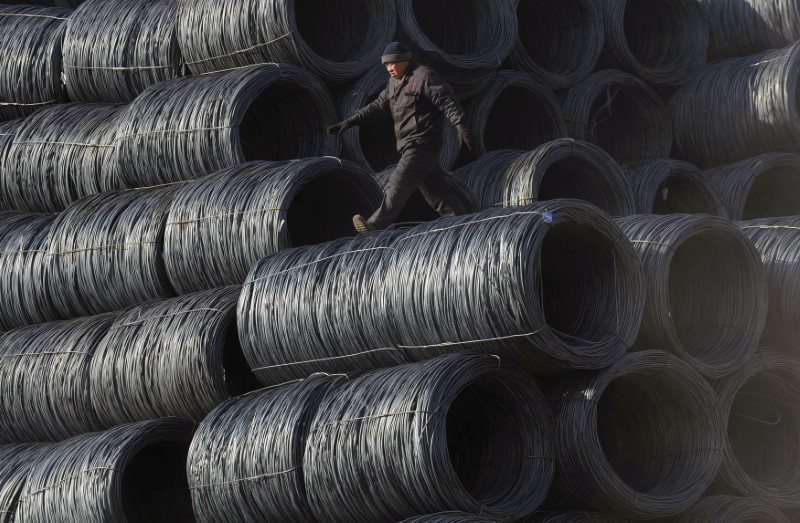By Maiya Keidan, Pratima Desai and Barbara Lewis
LONDON (Reuters) - Hedge fund investment in the metals industry is at its highest since 2011, according to investment data, a sign that investors are hoping to profit from a rise in prices that have spent years in the doldrums.
The investment by hedge funds follows a broader inflow of money into industrial metals, where prices are rising after production cutbacks helped to reduce a supply glut.
That oversupply crisis led to the closure of some specialist metals hedge funds, including those run by Apollo Global Management and Hall Commodities.
The metals industry's fortunes are turning, as an environmental crackdown in China, the world's second-largest economy and biggest consumer and producer of industrial metals, in polluting industries cuts supplies.
The upturn creates opportunities for speculative investors, betting that the strong run continues - or positioning themselves for a tumble in prices.
Data from S&P Intelligence showed hedge fund investments in metals and mining stocks reached $18.52 billion (13.65 billion pounds) on Sept. 5. This compares with a peak of $28.98 billion in 2010 and a low of $10.16 billion in 2015.
New preliminary data from industry tracker Blue Lion Research also showed that hedge funds' appetite for investing in metals was at its highest since October 2014.
Rock bottom interest rates, which depress profits from mainstream investments, and fears that stock markets, which are at record highs, could stumble have also helped to revive interest in the metals sector.
"We're seeing renewed interest in metals for a number of reasons ... including portfolio diversification and six years of a bear market," said Gerardo Tarricone, founder at Arion Investment Management, which is expected to launch with $10 million in start-up capital in October.
Tiberius Asset Management has diversified by making investments in the physical market, buying mines and smelters.
"We do what a miner would do, obviously in a much smaller capacity," Tiberius' Chief Executive Christoph Eibl said.
For speculative investors, metals, such as copper, used in power lines and pipes, nickel, used in batteries, or aluminium, used in cars, are seen as an increasingly attractive, albeit volatile, alternative.
Copper has enjoyed stronger than expected Chinese demand this year, which combined with a weaker U.S. dollar has propelled prices to three-year highs near $7,000 per tonne.
Data from Barclays (LON:BARC) shows investment in industrial metals, including from indices and exchange-traded funds, totalled $27 billion in July, up from $23 billion a year ago and $14 billion in 2015.
Hedge funds have also been investing in metals via the stock market. Anglo American (L:AAL), whose shares are up 69.7 percent in the 12 months to Sept. 11, has been popular with hedge funds looking to bet on higher prices, according to the S&P data.
Other mining companies are also popular with hedge funds, such as Glencore (L:GLEN) and BHP Billiton (L:BLT), which are up 103 percent and 43.5 percent, respectively, over the same time period.
Hedge funds with any kind of significant metals exposure have delivered returns of more than 4 percent in the year to end-August, according to data from industry tracker Eurekahedge, a stronger showing than some rivals. But some hedge fund investors, such as Ermenio Schettino, partner at fund-of-fund Falcon Money Management, are treading carefully.

"I have always looked for somebody that could add alpha in the metal space but find it difficult."